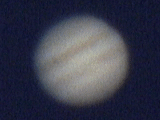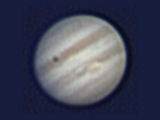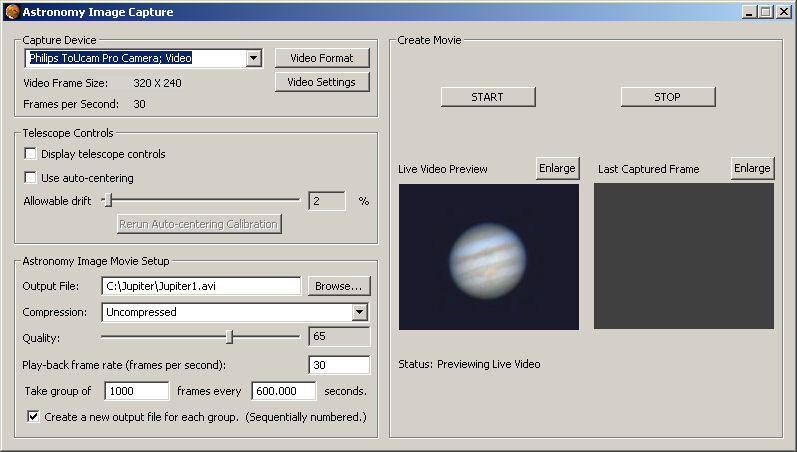
Astronomy/Planetary Photography
What is planetary photography?
Planetary photography refers to using a telescope and a webcam to make movies of relatively bright astronomical objects such as the Moon, Venus, Mars, Jupiter, and Saturn.
Why use a webcam to make planetary movies?
The Earth's atmosphere is constantly in motion and this displaces and distorts (smears) images that are taken with a telescope. If you capture several hundred images with a webcam using HandyAvi, then process them with one of the freeware programs on the internet such as RegiStax, amazing results are possible!

A few of the best After HandyAvi and
original images captured RegiStax processing of
using HandyAvi several hundred imagesThis is sometimes called "image stacking". Mathematically, it can be shown that averaging a lot of marginal images in this manner improves the result dramatically.
Will HandyAvi work with my webcam?
We noticed that some software systems could not handle the Philips ToUcam Pro webcam, a favorite among amateur astronomers. HandyAvi 2.0 uses the most recent versions of DirectX software to ensure that the widest range of webcams will be handled properly. HandyAvi 2.0 works very well with the ToUcam as well as nearly all other popular webcams such as the Logitech Quickcam Pro 4000 and the Philips SPC 900NC camera which has gained popularity among amateur astronomers.
HandyAvi lets you capture bright astronomical objects using a webcam and a telescope.
By bright objects, we mean objects that are bright enough for your webcam to see using your telescope. These include Mercury, Venus, the Moon, Mars, Jupiter, and Saturn. If you have a big enough telescope, then other objects become possible targets of course.
HandyAvi will control a Meade LX-200 telescope.
If you have a Meade LX-200 type telescope, you can also completely control the telescope through HandyAvi's telescope control panel.
See the Telescope Control page
HandyAvi also contains a centering option that will keep the planet centered in the frame if you are using an LX-200.
HandyAvi's Astronomy image capture control window:

